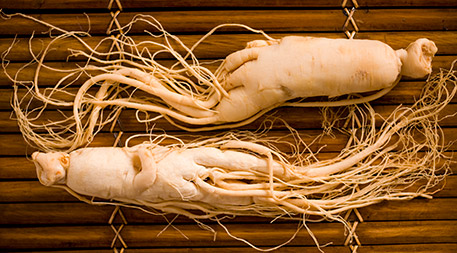February 27, 2017 — Reptiles don’t get more spectacular than the reticulated python, a constricting snake that can stretch over 25 feet — the world’s longest terrestrial vertebrate. Although adult pythons have few natural predators, humans prize them for their skins, which look handsome (at least to some consumers) transformed into boots and handbags. More than 300,000 wild reticulated pythons are harvested in Malaysia and Indonesia annually, most by rural workers who stumble upon the snakes and snatch them up to make a few ringgits or rupiahs. Dead pythons are skinned at local processing plants; their hides eventually make their way to department stores in London, Paris, Beijing and other epicenters of fashion.
You might assume that such a rapacious trade could only result in ecological disaster, but the data suggest otherwise. In 2013, Kering, the parent company of Gucci and other snakeskin-using brands, joined forces with the International Union for Conservation of Nature and the International Trade Centre, a group that supports businesses in developing countries, to form the Python Conservation Partnership, a collaboration devoted to studying and improving the trade’s sustainability, humaneness and transparency. Over the following two years, Dan Natusch, an IUCN python specialist, dissected thousands of snakes at processing plants in Indonesia and Malaysia and compared his findings with records from 20 years earlier. To his surprise, the numbers, sizes and reproduction of captured pythons hadn’t changed — suggesting that, no matter how you feel about the dubious ethics of turning millions of snakes into handbags, the trade appears to be biologically sustainable.
“A lot of my background is dealing with snake trades that are unsustainable, so I entered this project with a very skeptical view,” Natusch says. The snakes proved him wrong. That Southeast Asia’s pythons are so resilient, he says, is “quite a remarkable finding.”
If communities in developing countries profit from the plants and animals that dwell in their own fields and forests, the thinking goes, they’ll be more likely to preserve them. The evident sustainability of the python trade hints at a larger possibility: that the exploitation of natural resources doesn’t have to lead to their demise. That’s the premise of the BioTrade Initiative, a United Nations project that promotes biodiversity conservation by linking local harvesters to international companies and markets. If communities in developing countries profit from the plants and animals that dwell in their own fields and forests, the thinking goes, they’ll be more likely to preserve them. Meanwhile, corporations that rely on natural resources have an incentive to ensure the long-term persistence of their ingredients.
It’s a seductive idea — but like most conservation schemes, the devil is in the details of implementation.
“This kind of approach can be successful for conservation of biodiversity and improving livelihoods,” says Anastasiya Timoshyna, medicinal plants program leader at TRAFFIC, a group that monitors the plant and wildlife trade. “But it’s fundamental that it’s based on best practices.”
Breakfast of Biodiversity
The reticulated python’s surprising success is more exception than rule. For many species, international trade has led to grave harm. Some shark populations have crumbled under the demand for fin soup; elephants are persecuted by poachers; tigers are hounded for their pelts and bones. Not even flora is safe: Ginseng, rosewood and cycads are but a few of the plants that have been depleted by illegal harvesters. Although it’s impossible to reliably estimate the annual value of the illegal plant and wildlife trade, it surely runs into the billions of dollars.

A key ingredient in traditional Asian medicine, wild ginseng is threatened by habitat loss and illegal harvest in both Asia and North America. Photo © iStockphoto.com/beemore
Since 1996, the BioTrade Initiative has wagered that there’s a better way. The initiative works with companies and local producers in more than 20 countries to improve the sustainability, traceability and equity of a host of products derived from plants and animals. Although relatively affluent citizens of Europe and North America may not realize it, their lives are intimately tied to nature in developing nations. Sri Lankan sandalwood flavors the perfumes and cosmetics we splash on our skin; Vietnamese herbs hide in the pharmaceuticals we take; fruits and nuts from the global south comprise the energy bars we consume. In 2015, BioTrade companies and associations raked in more than €4 billion in sales.
As new biodiversity-based industries come online — think, for instance, of the exploding market for herbal supplements, which hardly existed even 20 years ago — ensuring the sustainability of global trade becomes both more challenging and more important.
“Using resources in an unsustainable and inequitable manner can further contribute to biodiversity loss,” warns Maria Julia Oliva, senior coordinator for policy and technical support at the Union for Ethical BioTrade. “But if businesses respect environmental and social criteria in how they work with biodiversity, they can make a positive contribution to conservation and sustainable use.”

Perfumes, cosmetics and skin creams are among the personal care products that include ingredients derived from wild plants. Photo © iStockphoto.com/vesmil
That’s where UEBT comes in. The union, founded in 2007, provides technical support and guidance to food, cosmetic and pharmaceutical companies that obtain natural ingredients from plants and animals. Its members commit to meeting international standards for criteria such as sustainable sourcing, fair wages and traceable supply chains, and, with UEBT’s help, set targets for self-improvement. Independent auditors check progress; companies that miss their targets have their memberships suspended.
Unlike companies that pursue, say, organic certifications, UEBT members don’t receive a direct price premium for selling biodiversity-friendly products. But there are bottom-line benefits nonetheless. When large companies like L’Oréal and Unilever set ambitious sustainability targets, Oliva says, meeting those standards becomes tantamount to a license to operate for others within the industry. What’s more, sustainability breeds security. “Ethical sourcing practices become the only way to ensure that companies can still make their products years down the line,” Oliva says.
In many cases, Oliva adds, nature not only supplies our consumables, it also offers livelihoods and sustenance to vulnerable people: Seventy percent of the world’s poor depend directly on biodiversity to meet their basic needs. For decades, global trade has exploited the bodies, knowledge and homelands of the rural poor; ethical biotrade is predicated on rebalancing the scales. In 2011, for instance, Natura, a Brazilian cosmetics company and UEBT member, agreed to share profits with 32 indigenous communities — a payment, in part, to access the traditional knowledge of the plant harvesters whose labor they leaned upon.
But biotrade still has hurdles to surmount, including its own obscurity. Wikiri, an Ecuadorian company that captive-breeds rare frogs, tries to be similarly symbiotic. By giving hobbyists an alternative to wild, smuggled species like the jewel-like little devil poison frog, says general manager Lola Guarderas, Wikiri hopes to drive the “gray and bad practices” that have long characterized the amphibian trade into extinction. According to Guarderas, Wikiri employs locals in its farms and laboratories, and offers educational grants to youth who live near the biodiverse forests where the company’s scientists study frogs and restore habitat. Over time, Guarderas says, some of Wikiri’s local workers have acquired enough technical knowledge and skill to contribute to breakthroughs in amphibian husbandry.
Unintended Consequences
But biotrade still has hurdles to surmount, including its own obscurity. A 2016 UEBT survey found that just 28 percent of Americans could correctly define biodiversity — more than twice as many as in 2009, but an indication of how far the industry still has to go. If consumers don’t concern themselves with the sustainable use of biodiversity, they’re unlikely to seek out companies that prioritize it.
Then there’s the challenge of traceability. According to Guarderas, Wikiri photographs each of its frogs and assigns codes that can be used to identify the amphibians as they move through supply chains. But identifying biotrade products gets considerably more difficult when plant and animal parts are chopped, skinned, ground, dried and otherwise processed. For many goods, says TRAFFIC’s Timoshyna, “The only place where the species is still intact is at the source.” And that’s before they circle the globe via convoluted supply chains. “A trader may sell some of a plant separately to a traditional medicine company, some to a wholesaler in the food sector, and some for herbal tea,” Timoshyna says. “It’s quite complex.”
In Lesotho, stricter harvest laws for a medicinal plant simply pushed more of the profits to wealthy chiefs. Even when supply chains are adequately monitored, the rise of new industries can spawn unintended consequences — and create losers as well as winners. One ugly example comes from Zimbabwe, where baobab fruit has become an increasingly lucrative export to European markets. When local councils implemented a permitting process to improve the trade’s sustainability, the program rapidly became a tool of abuse: A study found that guards pressured female baobab traders to perform sexual favors to avoid paying costly fees. And in Lesotho, stricter harvest laws for a medicinal plant simply pushed more of the profits to wealthy chiefs. “[L]ocal harvesters have participated and benefited less than local elites,” the study reported.
Snake Success
Fortunately, the python trade has produced no disastrous side effects — at least, not yet. According to IUCN’s Natusch, that’s a serendipitous by-product of ecology and biology: Exceptional generalists, reticulated pythons are capable of thriving everywhere from farmers’ fields to urban centers. In fact, the proliferation of palm oil plantations may actually be aiding the giant snakes by bolstering their rodent prey. “The success of the python trade,” says Natusch, “is mainly because of the success of pythons.” Not every species, in other words, will respond so well to international exploitation.
Nonetheless, groups like the Python Conservation Partnership, which is affiliated with the BioTrade Initiative, still have an important role to play. A 2016 PCP report proposed a series of regulatory changes to further strengthen python management, and Natusch regularly travels to python slaughterhouses to make sure harvesters are killing snakes humanely.
Of course, just because it’s sustainable to turn millions of pythons into high-end purses doesn’t mean it’s moral — a quandary that Natusch, who has spent his career advocating for the conservation of snakes, recognizes as clearly as anyone. Balancing conservation, animal welfare, local livelihoods and the myriad other considerations inherent in biotrade remains as tricky as ever. “You can’t tell poor people that they can no longer harvest their natural resources like they’ve been doing their whole lives,” Natusch says. “If you or I were in that position, we’d be doing the exact same thing.” ![]()
Ensia shares solutions-focused stories free of charge through our online magazine and partner media. That means audiences around the world have ready access to stories that can — and do — help them shape a better future. If you value our work, please show your support today.
Yes, I'll support Ensia!

Indigenous peoples trapping a species to extinction, only for them to be packed in crates and arrive mostly dead is NOT the way forward. Trading in live creatures is fraught with all kinds of opportunities for disastrous outcomes.
I also feel that the idea that local people will look after and conserve what they rely on for an income has proved false time and time again. Once the reliance is there they become dependent and cannot stop.
When natural resources were only used locally there was a fair chance they would not become depleted. When global markets are introducued into the equation it is a totally different matter.
As I said, no easy answers - other than to establish better ways for poor people to support themselves.